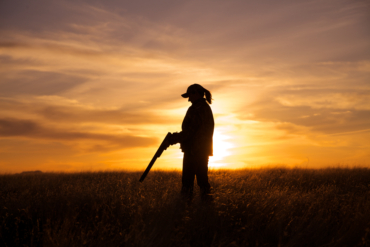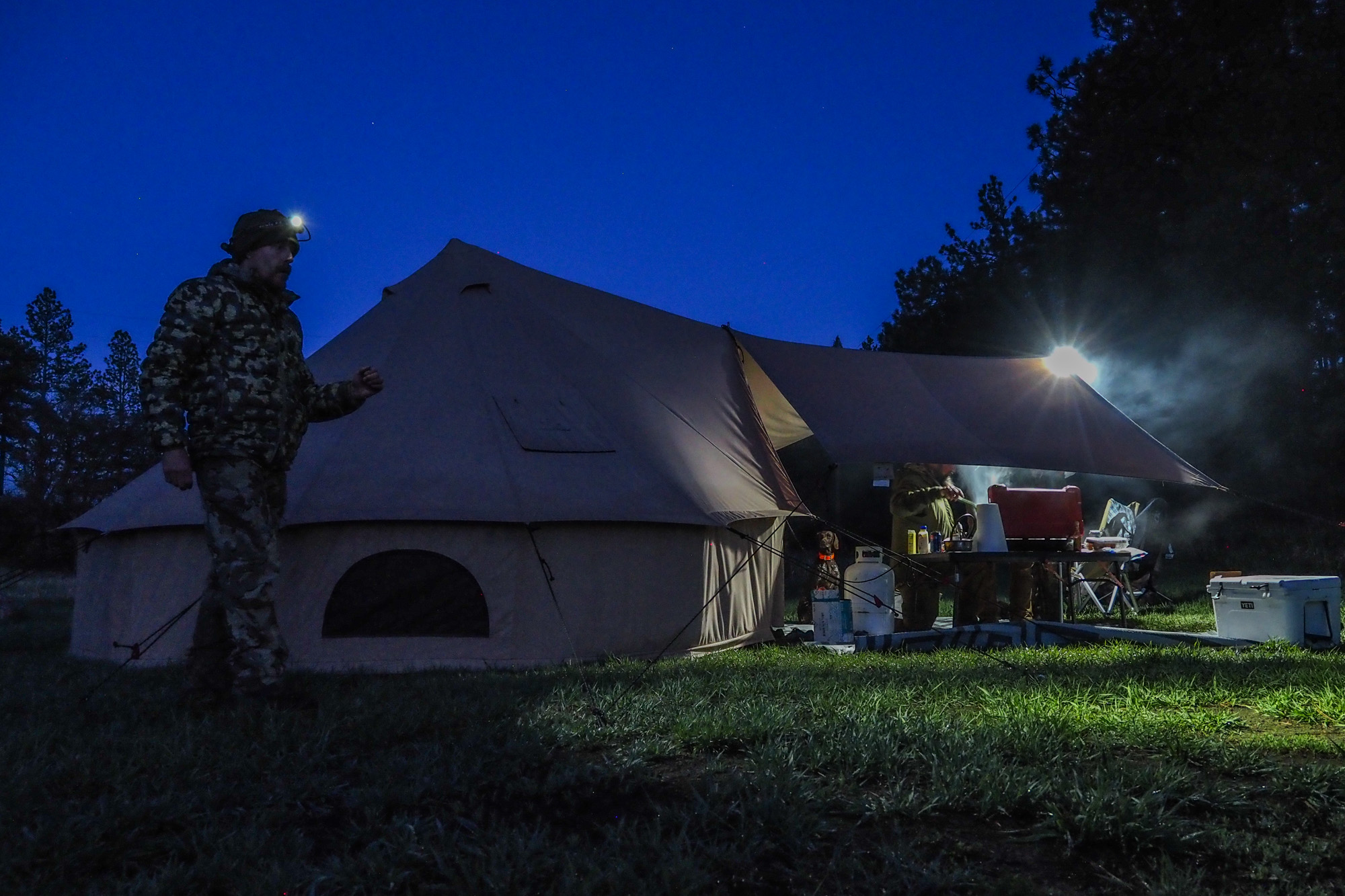The English setter is a kind, regal dog in the home, and a tenacious yet patient dog in the field. Read on for more on this versatile breed.
There’s something confoundingly royal about the English setter. Perhaps that sense of royalty lies in the ancient origins of the breed — it’s nearly 500 years old. Or it could be the elegant outline of the dog. That, too, is beautiful and commanding.
But, the overall package of looks, behavior, and utility make the English setter a resplendent partner, in the field or at home. Read more about this fabulous breed below.
Meet the English Setter

The American Kennel Club classifies the English setter as a medium-size breed, ranging from 23″ to 27″ and 45-80 pounds, with females at the lower end of the weight and size scale.
An athletic and lithe form combines with a regal head and larger ears often curlicued with waves. The coat is long and silky in parts, and it requires more maintenance than many birding breeds.
Often, hunters clip coats prior to hunting. The spotted look is referred to as belton, with some folks referring to the spotted breed as a Belton English setter.
More sensitive than your typical retriever, the English setter requires a steady but quiet hand in training. In turn, the breed is wildly devoted, kind, and easy to live with.
Although mellow in the home, they need daily exercise for fitness and stimulation. And like most hunting dogs, their instincts can run amuck if they’re left to their own devices.
But, English setters are known to be much more willing than stubborn. And their natural affinity for humans and other creatures makes them a joy to live with. Positive reinforcement will further imbue this breed with good manners.
Breeders have maintained high-quality bloodlines over the centuries. Because of this, the English setter tends to be a healthier dog than the more popular breeds.
However, it’s still imperative that breeders check and test for health problems, including hip and elbow dysplasia, genetics for blindness, and more. The life expectancy of an English setter is about 10 to 12 years, similar to most retrievers.
Hunting the English Setter

Many bird dogs originated in the large manors of western Europe, and the English setter is no outlier. Obviously, the breed originated in Great Britain, and a few historic names follow the breed because of that. More on that in a minute.
Thought to be a cross between Spanish pointers and water spaniels, this bird dog preceded the gun dogs of today, mostly because they preceded guns. Initially, setters were bred to ‘set’.
That is, when they honed in on their quarry, they would ‘set’ or lie down rather than point. The hunter would then throw a net over both dog and birds, and hunting went on in this way until the firearm outcompeted the net.
Once firearms came into play, the breed was honed once more into an upright pointing behavior rather than the set. English setters range less than your average pointer, staying closer rather than straying out.
A setter can also be trained to retrieve waterfowl, although they are best known for their work as upland hunters.
The Llewellin Setter Debate
In the 19th century, a few bloodlines diverged, as they did in many hunting breeds. In England, a line developed by a man named Edward Laverack evolved into more of the larger, flashier show-type of the breed. Meanwhile, R. LL. Purcell Llewellin developed a field performance line that is coveted to this day.
A fierce debate rages among gun dog owners on whether a Llewellin setter is a breed of its own. There’s a fabulous article in Outdoor Life that discusses the matter. Another great article in Gun Dog Magazine refers to the line as a “type of English setter.”
You’ll certainly find folks advertising their English setter puppies as Llewellin setters. And with this, you can be sure that it’s a line that is extremely honed in on hunting dog development.
The Llewellin line tends to be a bit smaller, has a high level of endurance, and makes for team-minded partners in the field and home.
If you’re looking to add an English setter that hunts into your household, the Llewellin bloodline is certainly a great place to start researching. Either way, prepare for a stunning and wonderful partner for all of life’s adventures.









